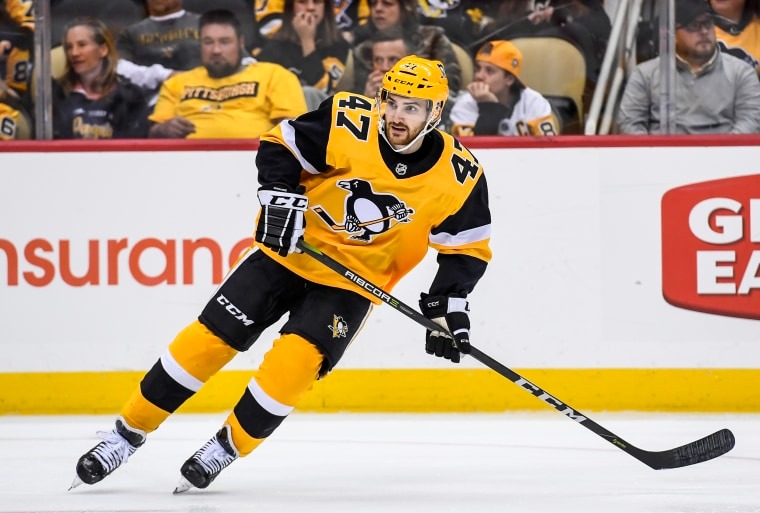Hockey faces a moment of reflection following Adam Johnson’s passing.

The untimely death of Adam Johnson during a UK Elite Ice Hockey League (EIHL) match in Sheffield last Sunday has reverberated across the ice hockey community. This incident might be a catalyst for substantial changes in protective equipment, unlike previous events.
Johnson, a Nottingham Panther player, tragically suffered a throat laceration during the second period of a Challenge Cup game against the Sheffield Steelers. While the Panthers club and others in the hockey community have labeled this occurrence as a “freak accident,” it remains a rare event despite the sport’s fast pace, physical nature, and the players’ sharp skate blades. Nonetheless, it isn’t the first of its kind.
Regarding professional men’s leagues, don’t anticipate a shift. The National Hockey League (NHL), home to the world’s top-tier players, has never mandated the use of neck protectors. Nevertheless, incidents have occurred within the NHL as well. In 1989, Clint Malarchuk, a goaltender for the Buffalo Sabres, had his throat slashed by a skate during a game against the St. Louis Blues when two players collided with his net. Despite receiving 300 stitches, he returned to the ice within two weeks.
In 2008, Richard Zednik’s throat was accidentally cut by a teammate’s skate during a game between the Florida Panthers and the Sabres. Zednik eventually recovered but missed the remainder of the season. Notably, during this period, only two NHL players used any type of neck coverings. One was Tomas Plekanec, who faced ridicule for his choice of a turtleneck. The other was Wayne Gretzky.
The NHL and its players have a well-documented history of reluctance toward embracing safety measures. They resisted goalie masks for decades, only gradually adopting helmets after a 1979 mandate, and introduced stricter regulations for dangerous hits, including those targeting the head, at a slow pace.
The resistance toward safety measures is deeply ingrained in the historical and cultural mindset of the NHL, reflecting a broader attitude prevalent in the sport, particularly in North America. There exists a certain pride in the inherent dangers of the game, where many revered players are admired for their toughness as much as their scoring abilities. For example, Gordie Howe, the NHL’s most prolific scorer before Gretzky, famously inspired the “Gordie Howe hat-trick” – a combination of a goal, an assist, and a fight.
Despite advancements in equipment like cut-resistant wrist undershirts, blade-stopping socks, and compression pants offering extended protection for the Achilles tendon in recent years, the use of neck guards remains neglected, even in professional leagues.
In 2020, Moritz Seider, now a Detroit Red Wings player, experienced a potential catastrophic skate laceration incident in Sweden that was averted by a neck guard. However, three years later, this NHL defenseman no longer wears one.
Following the recent incident, there’s been a collective reassessment of neck protection in professional leagues. The English Ice Hockey Association mandated the use of neck guards starting next year. Concurrently, the NHL’s deputy commissioner announced engagement with Marty Walsh, head of the NHL players’ union, regarding the issue and “strongly recommends” the use of cut-resistant equipment.
Hayley Wickenheiser, the esteemed Canadian women’s hockey figure and assistant general manager for the Toronto Maple Leafs, took to social media with a firm assertion: “It’s time for mandatory neck protection at every level in hockey. The risk is far too great not to.” Canada’s federal minister for sport also echoed the call for compulsory neck guards in the NHL and WHL.
In contrast, TJ Oshie, the Washington Capitals forward and founder of Warroad, a company specializing in protective hockey gear, admitted, “It’s not a cool look having neck guards on.” Despite this sentiment, Warroad completely sold out of its cut-resistant neck and wrist tops for both adults and youth this week. Oshie, who had not previously worn this style of shirt on the ice, ordered five turtleneck-style shirts for himself and his teammates, recognizing that Johnson’s death has prompted a reevaluation of the importance of neck protection, regardless of its appearance.
During a tribute to Johnson held by the Pittsburgh Penguins before their game against the Anaheim Ducks on Tuesday evening, a video showcasing Johnson’s rookie lap and his inaugural NHL goal with the Penguins played on the large screen above center ice. Players lifted their unprotected necks to watch the footage.
Earlier that day, the Penguins’ head coach, Mike Sullivan, disclosed that the team would mandate neck guards for their American Hockey League and East Coast Hockey League affiliates, and would strongly encourage their NHL players to use them as well. Penguins center Jeff Carter emphasized that this change is long overdue, stating, “Why not? We do it at every other level of hockey. We should have already been trying it. Shouldn’t have taken this long for something like this.”


